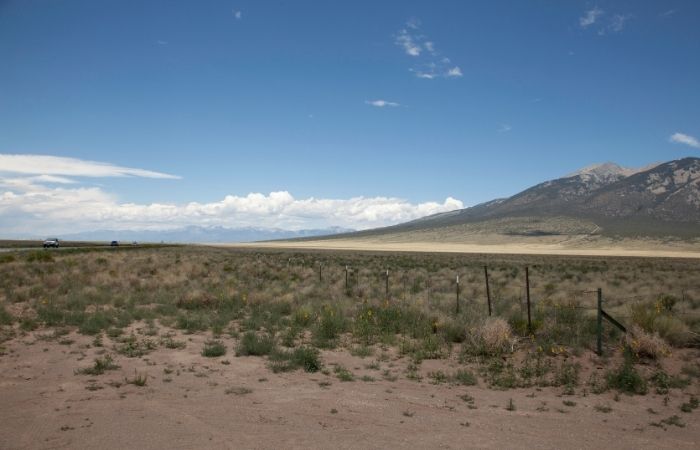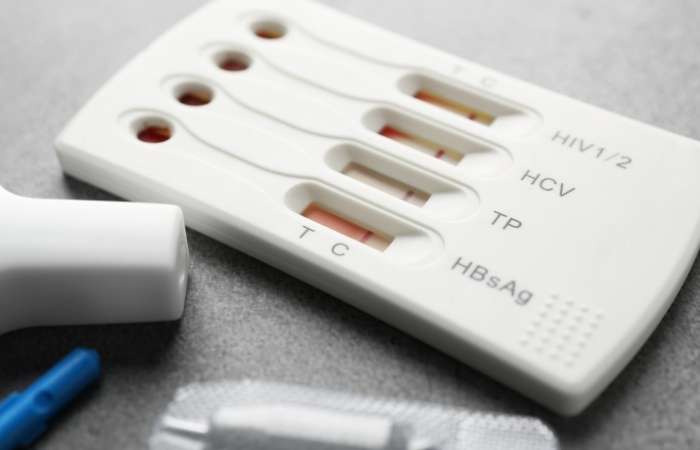Quick Answer: STD rates are rising in rural Colorado due to limited clinic access, fewer screening opportunities, and persistent myths that smaller communities face lower sexual health risks. At-home testing offers a private, practical solution.
The data tells a story that’s been unfolding quietly for years. From Aspen to Alamosa, STD case numbers have been climbing, particularly for chlamydia, gonorrhea, and syphilis. In 2022, Colorado saw more than 26,000 chlamydia cases statewide, with rural counties posting some of the steepest percentage increases. For syphilis, rates in parts of southern Colorado have doubled in just a few years. The reasons aren’t a mystery, but they challenge a lot of assumptions about where sexual health risks “really” live.

People are also reading: How Untreated STDs Can Affect Fertility
When Distance Becomes a Diagnosis Delay
In mountain towns and high plains communities, a “quick trip” to the doctor often means a full day off work, gas money, and a carefully planned route that might hinge on weather reports. That means many people put off routine screenings until they have symptoms, and by then, some infections have already caused complications. Kate’s story isn’t unique; it’s echoed in small towns where local clinics don’t have STD testing on site, or only offer it during limited hours once a week.
This isn’t just inconvenient. It’s epidemiology in motion. Public health researchers have long noted that reduced access to timely testing is one of the strongest predictors of higher STD prevalence in rural areas. By the time a person gets tested, they may have already passed the infection to others, creating quiet but persistent chains of transmission. And because sexual health is still a stigmatized conversation in many small towns, contact tracing and partner notification are less likely to happen.
Symptoms That Go Unchecked
Part of the challenge is that STDs rarely make a dramatic entrance. Chlamydia can be symptomless in the majority of cases. Gonorrhea might only cause mild discomfort that people attribute to something else, dehydration, irritation, or a yeast infection. Syphilis, in its early stages, can appear as a painless sore that vanishes after a few weeks, lulling people into thinking the problem has resolved on its own.
In rural Colorado, these quiet symptoms are even more likely to be ignored because they don’t seem urgent enough to justify the drive, the time, or the potential small-town gossip that comes from walking into a clinic everyone can see from Main Street. Yet untreated infections can lead to infertility, chronic pain, or, in the case of syphilis, neurological and cardiovascular damage years later. The early, easy-to-treat window is also the easiest to miss.
Myth #1: “We Don’t Have STDs Here”
Ask around in some rural counties and you’ll hear a version of this myth repeated like folklore: that STDs are a “city problem.” The idea is that smaller populations, closer social circles, and fewer casual hookups mean lower transmission rates. But the data paints a different picture. According to recent statistics, Alamosa County’s chlamydia rate rivals or exceeds some urban centers, and its syphilis rate has doubled in just a few years. Similar spikes are being tracked in other rural counties with populations under 20,000.
The reason is simple: sexual networks in smaller communities can be tight but overlapping. If one person contracts an STD and isn’t tested or treated, the infection can move quickly through interconnected partners. Add in seasonal tourism, ski workers in Aspen, hikers passing through Salida, and the mix of local and transient partners widens the network further. Rural geography doesn’t insulate against risk; in some ways, it intensifies it.
Check Your STD Status in Minutes
Test at Home with Remedium7-in-1 STD Test Kit

 For Men & Women
For Men & Women Results in Minutes
Results in Minutes No Lab Needed
No Lab Needed Private & Discreet
Private & DiscreetOrder Now $129.00 $343.00
For all 7 tests
The Human Side of the Numbers
When Miguel moved to a small town near Aspen for seasonal work at a ski resort, he expected powder days, new friends, and late nights out. What he didn’t expect was to spend his second month there searching online for “burning when peeing after hookup” in the back room of the staff lodge. The nearest clinic that could test for gonorrhea was in Glenwood Springs, over an hour away on icy roads, and the soonest appointment was in nine days. By the time he made it in, the infection had worsened. “If I could have just tested that night,” he said, “it wouldn’t have gotten this bad.”
Stories like Miguel’s aren’t rare in mountain towns. They’re part of a pattern where young, mobile workers, often living in close quarters, have active social and sexual lives but limited healthcare access. In places where jobs are seasonal and turnover is high, infections can spread through overlapping networks of residents and visitors alike, creating conditions ripe for underdiagnosed and untreated STDs.
Myth #2: “If I Feel Fine, I Don’t Need to Test”
This belief might be the single most dangerous misconception about sexual health. Chlamydia can stay silent for months. Gonorrhea can show only mild irritation before leading to pelvic inflammatory disease or infertility. Syphilis can progress quietly for years before resurfacing with devastating effects. In a state report, Colorado health officials noted that nearly 70% of reported chlamydia cases in 2022 were found during routine screening, not because symptoms prompted a visit. That means most people would have missed their diagnosis if they were relying solely on how they felt.
In rural areas, where fewer people schedule regular screenings due to distance or limited clinic hours, this symptom-silence is especially dangerous. It allows infections to circulate quietly until they resurface in more serious forms, or until a partner gets tested and makes the uncomfortable phone call that changes everything.
The Data Gap Between Denver and the Rest of the State
Denver’s healthcare infrastructure means faster diagnosis, more frequent testing, and better treatment coverage. Outside the metro area, testing often relies on a patchwork of community health centers, traveling clinics, and small practices that may not even stock all the necessary tests. In 2022, urban counties in Colorado reported higher raw numbers of STD cases, but several rural counties reported higher rates per capita, meaning the problem, relative to population, was actually worse.
And the distance isn’t just physical. In Denver, a sexual health clinic might operate daily and advertise openly. In a rural county, that same service might be hidden under “general health” listings, open twice a month, and staffed by someone you know from the grocery store. Privacy concerns, combined with stigma, create yet another barrier, one that drives some people to skip testing entirely.

People are also reading: Herpes Symptoms in Women: What to Look For
Tourism and the Transient Effect
The Rockies draw millions each year, skiers, hikers, festival-goers. They also bring in seasonal workers from across the country and beyond. Short-term relationships are common in these settings, where social circles are tight but always shifting. This churn can make contact tracing nearly impossible when someone tests positive. Even with the best intentions, by the time you realize you need to tell a partner, they may be back in another state, or country, without any way to reach them.
This transient effect adds fuel to rural STD rates because infections can move quickly through overlapping communities without staying in one place long enough for a coordinated public health response. By the time local data shows a spike, the chains of transmission may have already shifted to a new town or a different season’s workforce.
Breaking the Silence Without Breaking Trust
When Erin, a 27-year-old bartender in Salida, first noticed an unusual discharge, she told herself it was probably a yeast infection. She wasn’t ready to tell anyone, certainly not the doctor who had been friends with her parents for decades. “In a town this small,” she said, “you can’t sneeze without someone’s aunt hearing about it.” She waited. Weeks later, the discomfort got worse, and she finally drove to Colorado Springs for care. The test came back positive for gonorrhea, and she had no idea how long she’d been carrying it.
This is where stigma turns manageable infections into long-term problems. When privacy feels impossible, people postpone or avoid testing altogether. In rural Colorado, where everyone seems to know everyone, the fear of being judged, or even just recognized, at the clinic can outweigh the urgency of a check-up. That silence doesn’t just affect the person delaying care; it ripples through the community, keeping transmission chains alive.
Myth #3: “At-Home Tests Aren’t as Reliable”
The idea that testing at home means sacrificing accuracy is outdated. Modern at-home STD kits use the same laboratory technology as clinics. You collect your sample privately, whether it’s a urine sample, swab, or small finger-prick blood test, and send it to a certified lab. Results come back in days, not weeks, and in most cases, they’re just as accurate as an in-person test. For rural residents, this can mean the difference between same-month treatment and an infection that lingers for years.
Public health advocates in Colorado have started pushing for broader awareness of at-home testing as a way to close the rural gap. While no one’s claiming it’s a complete substitute for all sexual health services, it’s a critical tool in places where getting to a clinic requires taking time off work, finding childcare, or navigating treacherous winter roads.
Check Your STD Status in Minutes
Test at Home with Remedium6-in-1 STD Rapid Test Kit

 For Men & Women
For Men & Women Results in Minutes
Results in Minutes No Lab Needed
No Lab Needed Private & Discreet
Private & DiscreetOrder Now $119.00 $294.00
For all 6 tests
A Sex-Positive Shift in Rural Health
It’s easy to frame rising STD rates as a cautionary tale, but the truth is, sex itself isn’t the problem, access is. In the ski lodges of Aspen, the farmhouses of the San Luis Valley, and the college dorms of Gunnison, sexual activity is part of life. Pretending it isn’t only keeps people uninformed and unprepared. A sex-positive approach means acknowledging desire, diversity, and the reality that adults, and teens, are making choices every day that deserve informed support, not judgment.
That support can look like making condoms available in more rural shops, talking openly about testing during school health classes, and reminding people that at-home kits are not only for those who feel sick, they’re for anyone who wants to know their status. When people see testing as an act of care, not confession, they’re far more likely to do it regularly.
When the Mountains Work Against You
Snowstorms, road closures, and wildfire detours aren’t just inconveniences here, they can completely derail access to time-sensitive medical care. A syphilis test delayed by a week can mean a partner goes untreated and spreads the infection unknowingly. That’s why at-home options aren’t just about privacy; they’re about resilience in a state where geography and weather can isolate you overnight.
For some, like Miguel, the solution came after the problem, he now keeps an at-home kit on hand so the next time a question arises, he won’t have to wait for a clinic slot. For others, it’s about routine, making testing as normal as changing snow tires or scheduling a dental cleaning. In places where missing your “window” could mean months before another chance, proactive testing is a way to stay one step ahead.
Closing the Gap, One Test at a Time
When Kate finally got her results, she wasn’t angry, she was determined. She ordered a second at-home STD kit that same week, not because she expected another positive, but because she wanted to normalize the process for herself. “If I treat it like brushing my teeth, maybe I won’t be sitting here in another three years wondering what’s going on inside my body,” she said. That shift, from reaction to prevention, is exactly what public health officials hope to see in rural Colorado.
The surge in STD rates outside Denver isn’t inevitable. It’s a signal, and signals can be acted on. By making testing accessible, whether through mobile clinics or discreet home kits, and by replacing shame with straightforward conversation, communities from Aspen to Alamosa can turn the curve. The answer isn’t to change who we are or how we live, it’s to give ourselves the tools to live well, informed, and without unnecessary risk.

People are also reading: Testing for HIV at Home: Benefits, Accuracy, and Tips
FAQs
1. Are the rates of STDs really going up in rural Colorado?
Yes. State data shows that chlamydia, gonorrhea, and syphilis are on the rise in some rural counties, some of which have rates that are higher than the average for cities.
2. Why are the rates of STDs going up outside of Denver?
Limited access to clinics, long wait times for screenings, seasonal tourism, and ongoing stigma all play a role in the rising rates.
3. Can I trust the results of a home STD test?
Yes. Many at-home tests use the same certified labs as clinics and are very accurate when used correctly.
4. What if I don't have any symptoms?
A lot of STDs don't show any signs for months or years. The only way to be sure is to get tested regularly.
5. Is testing private in small towns?
Testing at home is completely private, and you can get your results safely online or by phone.
6. Does tourism have an effect on STD rates in rural areas?
Yes. Seasonal workers and visitors can make it harder to trace contacts and expand sexual networks.
7. How often do I need to get tested?
Most health experts say that sexually active adults should get tested once a year, or more often if they have new or multiple partners.
8. Do weather and travel problems really make testing harder?
In Colorado, snowstorms, wildfires, and long distances can make it hard to get to the clinic. At-home kits can help with this.
9. Do home tests find all STDs?
Most kits look for the most common infections, but some conditions may need to be checked out in person or with blood tests.
10. How do you talk to your partner about testing in the best way?
Don't judge, focus on your health together, and make it a normal part of responsible intimacy.
Take The Step Now
Whether you’re living in a mountain cabin, working a ski season, or running a farm in the San Luis Valley, your health matters just as much as anyone’s in Denver. Access shouldn’t depend on a ZIP code. Testing shouldn’t be a luxury. And knowing your status shouldn’t come at the cost of your privacy.
Sources
1. KDNK – Syphilis and other STDs on the rise in Colorado, especially post-pandemic
2. CDC – National STD Surveillance (2019 baseline trends)
3. Testing.com – STD trends and testing resources in Colorado










